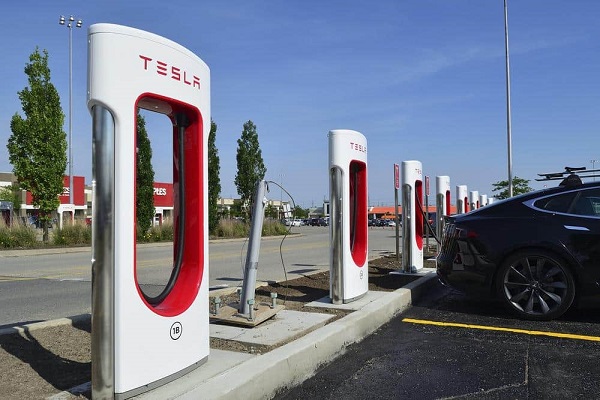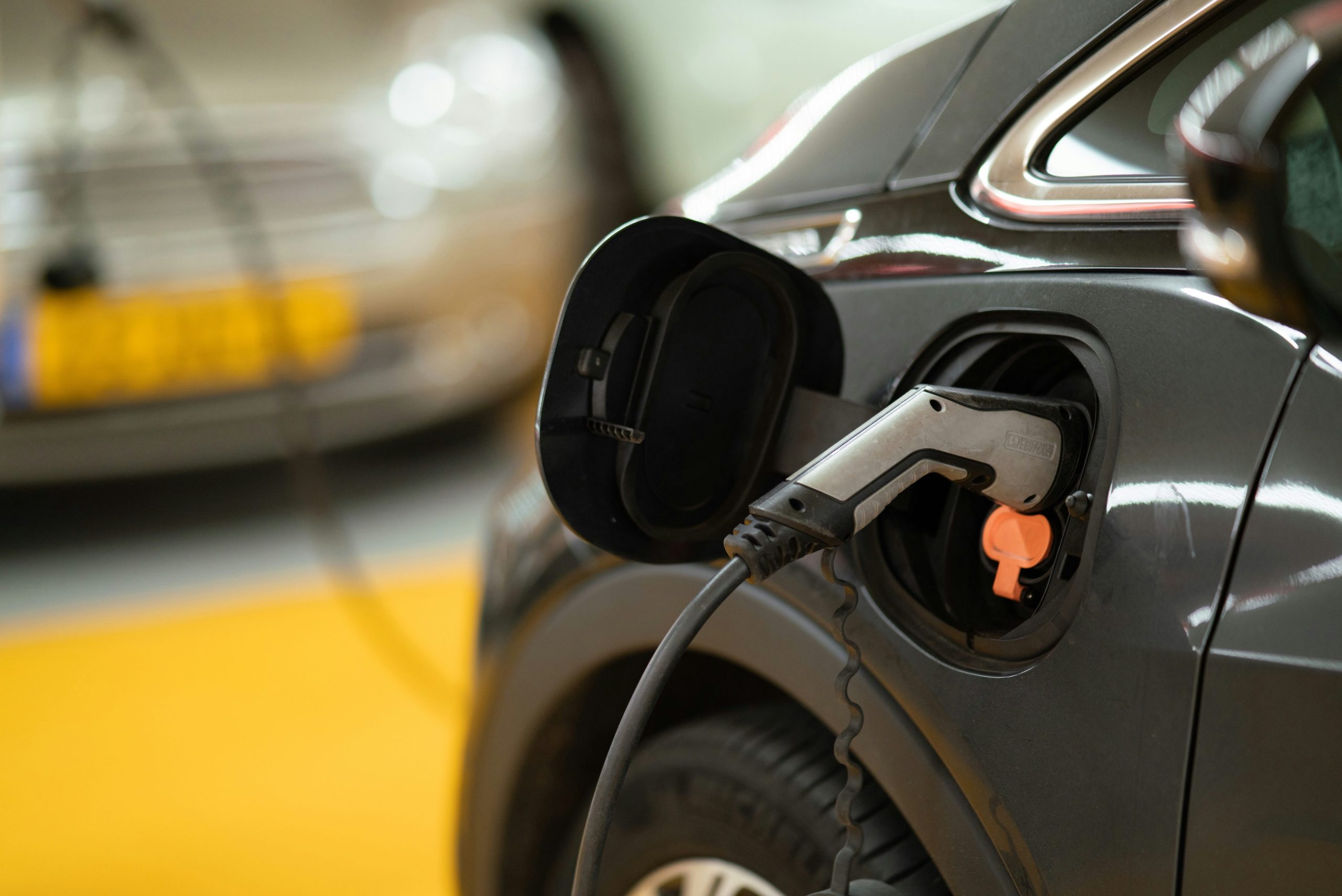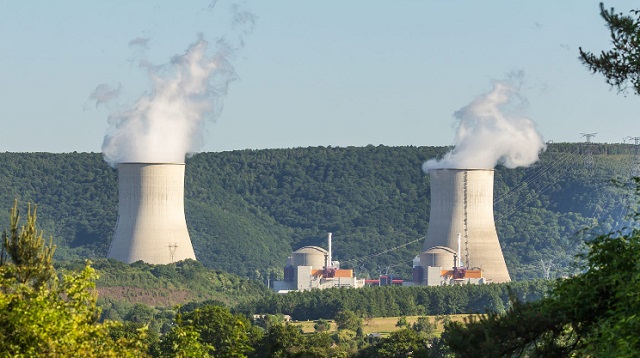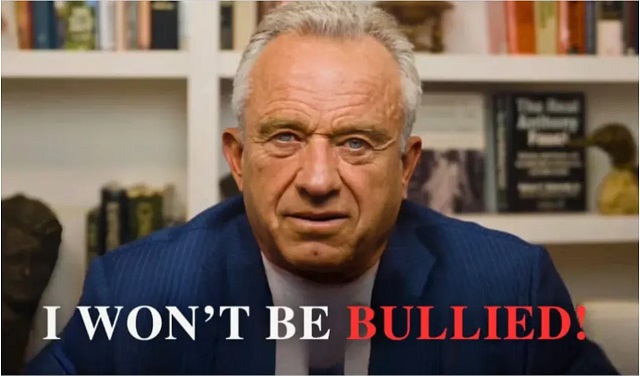Automotive
Electric vehicles facing uphill climb

From Resource Works
Ford shifts from EVs to gasoline trucks in Oakville due to declining demand and financial losses, challenging government EV targets.
In October 2020, the federal and Ontario governments announced with fanfare that they would each pour $295 million into helping Ford upgrade its assembly plant in Oakville to start making electric vehicles.
“The upgrade of the Ford plant will make Oakville into the company’s No 1. electric vehicle factory in North America,” we were told.
And Prime Minister Trudeau declared: “This is a win-win. . . . helping accelerate our transition to a low-carbon, clean-growth economy, which will help protect our environment, drive innovation, and create many good middle-class jobs.”
In April 2023, Ford announced it will spend $1.8 billion to retool its Oakville Assembly Complex, beginning in mid-2024, to build next-generation passenger electric vehicles in 2025.
Then the target date of 2025 becomes 2027.
And now, in July 2024, reality strikes: Ford confirmed that the Oakville plant would no longer produce electric three-row SUVs but would instead turn out larger, gasoline-powered versions of its flagship F-Series pickup truck.
The reason: a global slowdown in electric vehicle demand, with hesitant customers delaying plans to buy EVs, and many opting instead for hybrid-electric vehicles.
Ford, for one, said it will step up hybrid offerings and that by 2030 it expects to offer hybrid powertrains across its lineup of gas-powered vehicles. Ford has also delayed production of electric pickup trucks in Tennessee.
Ford now says its electric vehicle unit lost $1.3 billion USD in the first quarter alone. It sold 10,000 vehicles in that period, and thus lost about $132,000 US for every EV it sold.
General Motors also announced it would cut production of EVs, citing slowing demand.
As far as we know, Honda Canada is proceeding with a $15 billion plan to create Canada’s first comprehensive electric-vehicle supply chain, comprising four plants in Ontario. It includes Honda’s first EV assembly plant in Alliston, ON, which Honda said will produce up to 240,000 vehicles per year.
Flavio Volpe, president of the Automotive Parts Manufacturers Association, said the Ford decision is “not good news,” and he fears there will be similar announcements from other car companies.
And automotive industry analyst Robert Karwel says: “I would definitely not be surprised to see announcements from other companies.”
“People are getting payment fatigue right now generally, and EVs are more expensive,” said Karwel, a senior manager of J.D. Power’s Power Information Network. “The average car payment hit $900 a month in January.”
In the first quarter of this year, 46,744 light and medium-duty EVs were registered across Canada, 11.2% of the market share.
B.C. has long led Canada in the uptake of electric vehicles, and in May they made up 10.7% of light-duty vehicle sales.
But another factor weighing on consumers is B.C.’s recent reduction in rebates for electric vehicles.
B.C. reduced rebates to $3,000 for battery, fuel-cell and longer-range plug-in hybrid electric vehicles and $1,500 for shorter-range plug-in hybrid electric vehicles. The previous incentives ranged from $2,500 to $6,000, depending on the kind of car.
And now, only vehicles sold for under $55,000 qualify for the rebates. Previously, the maximum price was $77,000 to qualify. The federal rebate of $5,000 for qualifying vehicles, introduced on May 1, is still available.
If the slowdown in demand continues, it will only help power producers such as B.C. Hydro, which face staggering demand for power, for EVs and for industrial and clean-energy use.
The federal government requires at least 20% of new vehicles sold in Canada to be zero-emission vehicles (ZEVs) by 2026, at least 60% by 2030, and 100% by 2035. (ZEVs include battery electric vehicles and plug-in hybrid electric vehicles.)
Prime Minister Trudeau: “As a great Canadian once said, that is where the puck is going and that is where we’re going to be.”
B.C. is even more ambitious: It has set targets requiring 90% of all light-duty new vehicle sales to be zero-emission by 2030 and 100% by 2035.
That means B.C. needs substantially more power to cope with EVs — and will require even more than that to handle expected population growth and the province’s plans to electrify BC’s economy and push clean energy.
Now the Energy Futures Institute (EFI) calls in a new report for “a dramatic increase in domestic electricity production” in B.C., and cancellation of current plans to wind down some existing power-generation facilities.
EFI chair Barry Penner: “After years without new generation coming online, the long-awaited Site C dam is expected to start producing power by next year. Even if Site C was available last year or this year, it wouldn’t be enough to avoid having to import electricity from the United States and Alberta to keep our lights on.”
As for the federal target, the Public Policy Forum says Canada must build more electricity generation in the next 25 years than it has over the last century in order to support a net-zero emissions economy by 2050.
All in all, Canada’s electric vehicle transition could cost more than $300 billion by 2040 as the installation of charging infrastructure expands, upgrades to the electrical grid are made, and other changes take place, according to a report released by Natural Resources Canada.
Among other things, it says Canada needs to add 40,000 public charging ports per year on average between now and 2040. There now are around 32,000 public ports across the country, and roughly 11,000 were installed in 2023.
The Canadian Vehicle Manufacturers’ Association says lack of charging infrastructure is already deterring some would-be EV buyers. A lack of charging station availability was cited as a top concern by 72% of consumers, according to an Autotrader Canada survey conducted in March.
- Cornelius van Kooten, an economics professor and Canada Research Chair in Environmental Studies and Climate Change at the University of Victoria, said the federal timeline for electric vehicles “isn’t realistic or feasible.”
In a study for the free-enterprise Fraser Institute, he said that to meet the goal, Canada would need the equivalent of 10 big new hydro dams (or 13 large natural-gas power plants).
Quebec, for one, has already had to start limiting industrial expansion because it can’t fill all the power needs.
So you can but sigh when you hear of Quebec’s latest plan for electric vehicles: it is moving ahead with regulations that not only mandate EV sales but actually prohibit sales of any internal combustion engines — including plug-in hybrids, from January 1, 2035.
Automotive
Ottawa’s tariffs undercut Ottawa’s EV mandate

From the Fraser Institute
Asian countries such as China and Japan were not particular threats to prior automotive markets because North America’s massive and diverse internal combustion vehicle markets were capable of relatively lower-cost production of superior quality vehicles. That’s not shaping up to be the case for EVs, which are vastly more expensive coming off North American assembly lines than in China and other Asian countries.
Seemingly every week, Canada’s electric vehicle (EV) transition policy framework grows more incoherent. The goal of Canada’s EV policy is to ensure all new light-duty vehicle sales in Canada are zero-emission vehicles (ZEVs), with a strong emphasis on battery-electric vehicles, by 2035.
The latest incoherence is Prime Minister Trudeau’s announcement of 100 per cent tariffs on Chinese EV imports and 25 per cent tariffs on Chinese steel and aluminum imports (the Canada needs to build EVs). This will directly undercut the government’s EV transition targets by denying Canadians access to affordable electric cars.
The stated rationale for the tariffs is, according to Finance Minister Chrystia Freeland, that the “Chinese are trying to corner the North American EV market by dumping subsidized vehicles into it” and that “China has an intentional, state-directed policy of overcapacity and oversupply designed to cripple our own industry” so “we simply will not allow that to happen to our EV sector.” And arguably, some of that is probably reasonable.
Tariffs are generally understood as protectionist mechanisms, designed to shield domestic industries from lower-cost foreign competition by making imported goods more expensive. Additionally, they can serve as punitive measures to penalize countries for hostile economic or political actions. By limiting access to one’s markets, tariffs can reduce the profits of the targeted country, thereby pressuring it to alter behaviours or policies. When imposed against countries intentionally sabotaging markets, tariffs may be considered a legitimate response.
But tariffs on China will also hurt Canadians by keeping lower-cost goods out of our market, leaving them with only higher-priced goods and services provided by protected domestic industries that need not fear price competition and thus feel little pressure to lower the prices for their goods and services.
And this is part of the incoherence of the new Trudeau tariff policy. The Trudeau EV mandates are set to create, in essence, a monopoly on the types of automotive technologies (again, EVs) allowed to be used in Canada, which other countries can manufacture more cheaply than domestic manufacturers. Asian countries such as China and Japan were not particular threats to prior automotive markets because North America’s massive and diverse internal combustion vehicle markets were capable of relatively lower-cost production of superior quality vehicles. That’s not shaping up to be the case for EVs, which are vastly more expensive coming off North American assembly lines than in China and other Asian countries.
By driving up the costs of buying EVs in Canada, the Trudeau government will directly undercut its EVs-by-2035 mandate. If people can’t afford EVs, as most currently cannot, the EV mandate targets are doomed. People will simply hold their old internal-combustion vehicles for longer. This trend is already observable in the United States where new vehicles have become more expensive. Americans are holding on to their vehicles longer than ever, with the average vehicle age reaching 13.6 years.
The Trudeau government’s highest priority has been the war on climate change, which various government leaders in Canada and around the world have proclaimed the greatest threat to people and the planet in human history. But if the government is sincere about this, then the priority should be to maximize Canadians’ access to cheaper EVs, and the prime minister should be largely indifferent to where Canadians choose to source those EVs. Indeed, he should urgently want low-cost EVs available to Canadians for there to be any hope of achieving his all-EV by 2035 goal.
Author:
Automotive
Trudeau and Ford at it again with more taxpayers dollars for EVs

From Canadians For Affordable Energy

More good money is being thrown after bad, but that seems to be the theme of Trudeau’s government.
On Monday Goodyear Tire announced a $575 million expansion of their Eastern Ontario manufacturing plant to produce electric vehicles, and to make their plant more energy efficient.
And Doug Ford and Justin Trudeau were there for the photo opportunity. Why? Because — shocker — this move comes with serious money from taxpayers in Ontario and throughout Canada. Goodyear is set to receive up to $44.3 million from the federal government through the Strategic Innovation Fund and $20 million from Ontario through the provincial Invest Ontario.
In case you’ve lost track of the money — your money — which has been thrown down this blackhole to date, here’s only some of the close to $46 billion that has been committed:
- Northvolt, electric vehicle battery manufacturing facility, up to $1.34 billion
- Stellantis—LGES (NextStar), EV battery manufacturing facility — $5 billion
- Volkswagen (PowerCo), Federal ($700 million) and Ontario governments ($500 million)
- Ford EcoPro, $322 million
- Stellantis, Federal ($529 million) and Ontario government ($513 million)
- Umicore, Federal ($551.3 million) and Ontario government ($424.6 million)
- Ford Motor Company of Canada, $295 million from both the Federal and Ontario governments
- GM Ingersoll, $259 million from both the Federal and Ontario governments
More taxpayer dollars for cars that no one wants to buy, and are only affordable with heavy government subsidies.
In fact, last month Ford Canada announced that they would be abandoning their plans to retool their plant in Oakville, ON to focus on EV production. Instead, the plant will begin to produce their popular F-Series gasoline-powered heavy duty pickup truck. Ford plants in Ohio and Kentucky are at full capacity and can’t keep up with the demand for the F-Series, so they are shifting some of the load to Oakville. (Trudeau might learn a lesson here about supply and demand, which is what makes a healthy economy work.)
Plant workers were no doubt relieved to hear this, as Ford had already delayed the date when the plant would begin producing EVs from 2025 to 2027, due no doubt to their multi-billion dollar annual losses on EVs. (They lost $4.7 billion on EVs in 2023 and they’re projected to lose nearly $5.5 billion this year.) Many workers had already been laid off, and many more layoffs were expected. But now they’ll be hard at work producing a reliable Internal Combustion Engine (ICE) pickup.
This should come as no surprise. We need only look around the world for examples of dwindling EV sales. In Germany, EV sales fell by 37%. This slump is directly related to the premature ending of the purchase subsidies program. Budget issues forced Germany to end the program a year sooner than anticipated.
In fact, whenever a country reports an increase in EV sales, be sure to look at the subsidies being offered. “In France, a social leasing scheme which helps to provide cheap EVs to low-income households helped see BEV sales increase by 14.9 per cent in the first half of 2024”. And in Italy EV incentives helped push EV sales “up by 7 per cent across the first six months of the year.”
The lavish subsidy programs for EVs have created a false economy whereby they are only attractive and affordable with taxpayer handouts. Canada should expect the same slump in sales when our own subsidy programs come to an end.
In fact, the only nation which shows no sign of slowing down on electric vehicles is China, where they’re pumping them out at breakneck speed. This is, of course, so that they can take advantage of the EV mandates which Canada and other nations have enacted. China’s EV manufacturers are able to undercut Western producers since they control the lion’s share of Lithium battery production.
Their government also heavily subsidizes the industry. But chances are, once they control most of the EV market share, bankrupting smaller producers, they’ll jack up the price. And because of the mandates, drivers will either have to pay what they’re asking, or else invest in a horse and buggy.
This has led to calls for the Trudeau government to impose punitive tariffs on Chinese EVs, to prevent them from inundating the Canadian market to the detriment of Canada’s economy and Canadian workers. Trudeau and co have dragged their feet, likely because they don’t want to offend Chairman Xi.
We certainly should impose those tariffs. But what would be even better for regular, everyday Canadian taxpayers — not that that ever seems to be top-of-mind for Trudeau or Doug Ford — would be to scrap the EV mandates altogether. Forcing Canadians to buy EVs by 2035 is a terrible policy that will make us poorer as individuals and poorer as a nation. And it will ultimately fail.
Better to admit that now, while we still have some money we haven’t paid out by the truckload to green corporate grifters.
Dan McTeague is President of Canadians for Affordable Energy.
-

 Brownstone Institute2 days ago
Brownstone Institute2 days agoWhy Did Zuckerberg Choose Now to Confess?
-

 Agriculture2 days ago
Agriculture2 days agoGlimpse into the Future of Food
-

 illegal immigration2 days ago
illegal immigration2 days agoIllegal immigrants crossing from Canada into USA in record numbers
-

 Alberta2 days ago
Alberta2 days ago‘Coutts Two’ Verdict: Bail and Mischief
-

 Energy20 hours ago
Energy20 hours agoBC should revisit nuclear energy to address BC Hydro shortages
-

 Bruce Dowbiggin2 days ago
Bruce Dowbiggin2 days agoFrom Deal With It: A Cruel, Senseless Fate Ends A Brilliant Career
-

 CBDC Central Bank Digital Currency18 hours ago
CBDC Central Bank Digital Currency18 hours agoRF Kennedy Jr and Political Realignment
-

 Health16 hours ago
Health16 hours agoIntegrative Approaches For Cancer


